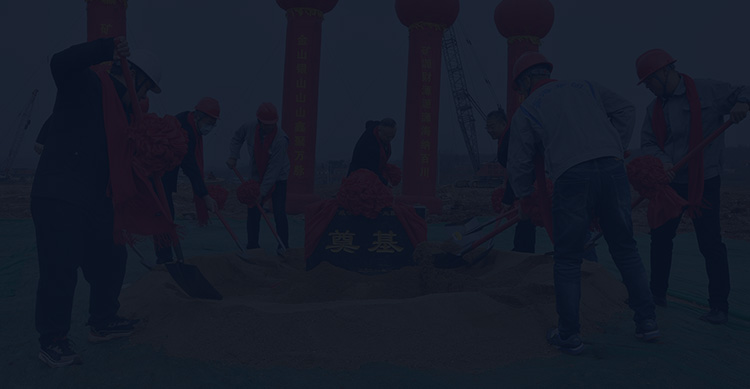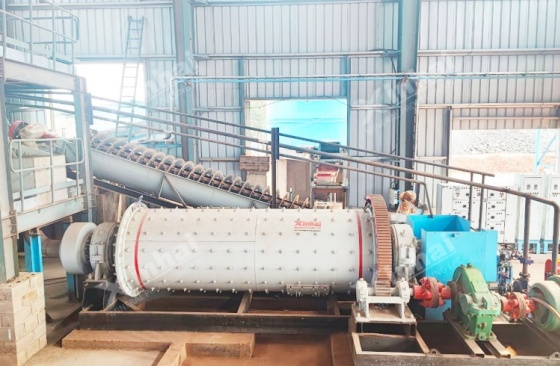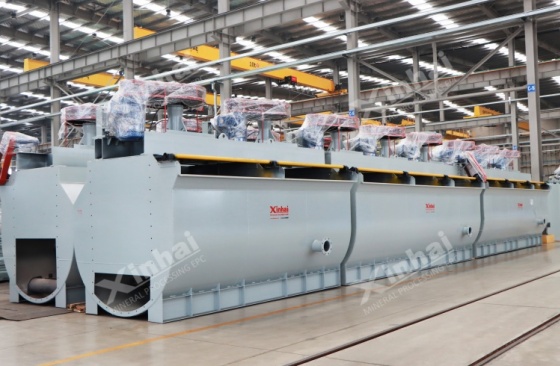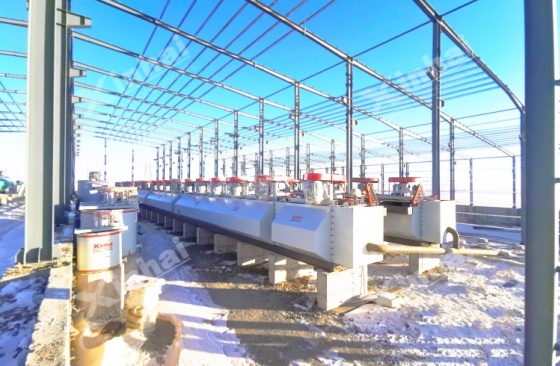
Antimony extraction is a method of separating antimony from gangue minerals from raw ore to purify metallic antimony. With the increasing application of antimony in emerging industries such as lithium-ion batteries and photovoltaic glass, antimony extraction projects have received widespread attention. This article introduces the methods and processes of antimony extraction in detail, and based on Xinhai Mining's many years of experience, deeply analyzes the economic feasibility of antimony extraction projects.
Antimony is a silvery-white metalloid with unique physical and chemical properties. It is widely used in many fields. More than 60% of the world's antimony is used to produce flame retardants, and 20% of antimony is used to make alloys. Antimony is widely used in the semiconductor and electronics industries, glass industry, and medicine. In addition, antimony is also used in some emerging technologies, such as negative electrode additives for lithium-ion batteries and photovoltaic glass clarifiers. It is listed as a strategic mineral by China, the European Union, and the United States.

1. Antimony ore pretreatment
We must first pretreat the antimony ore. It mainly includes two processes: crushing and grinding. The raw ore is crushed in one or two stages to form blocks of 20~50mm.
The ore is further ground to 0.1~0.2mm using a ball mill or rod mill. The purpose is to achieve monomer dissociation of antimony ore. Use a spiral classifier or hydrocyclone to control the particle size to prevent over-grinding and ore muddling.
2. Flotation method
Flotation is a common beneficiation method for extracting antimony. Its working principle is to change the physical and chemical properties of minerals by adding flotation agents, and use flotation bubbles to separate antimony from gangue minerals.
The commonly used agents in the flotation process of antimony are: lime-adjust the pH value to alkaline conditions of 8-9; collector-butyl xanthate (100~300g/t), used to adsorb on the surface of antimony ore; foaming agent-pine oil (20~50g/t), used to generate a stable foam layer.
Flotation process: roughing-scavenging-concentrating. Roughing can use XCF flotation cells to quickly recover most of the antimony ore. The antimony grade of the roughing concentrate can reach 30~40%, and the recovery rate is 60~70%. Scavenging is to recover the antimony ore remaining in the roughing tailings to reduce antimony losses. The purpose of concentrating is to further increase the concentrate grade to 45~60%. Concentrating usually requires 2-3 times to gradually remove impurities and achieve antimony enrichment.

3. Gravity separation and magnetic separation
In the process of antimony extraction, gravity separation and magnetic separation are usually used as auxiliary methods in combination with flotation to achieve better enrichment effect.
(1) Gravity separation
For coarse-grained intercalation (>0.1mm) and the density of gangue is significantly lower than that of antimony ore, gravity separation can be used. The raw ore is crushed to 10-20 mm and sent to the jig for waste disposal. The concentrate is ground in the ball mill and the particle size is ground to -0.5 mm. It is sent to the spiral chute for rough separation and then to the shaking table for fine separation.
(2) Magnetic separation
The purpose of magnetic separation is to remove magnetic minerals, such as magnetite and ilmenite. When antimony oxide minerals coexist with magnetic impurities, the oxide ore can be removed at the same time. Magnetic separation process: After the raw ore is crushed, it is ground to -0.2 mm. After grinding, it enters low-intensity magnetic separation to remove magnetite, and the tailings enter gravity separation or flotation.
4. Pyrometallurgical extraction of antimony
Roasting oxidation: Heating to 500–1000℃ in air, stibnite (Sb₂S₃) is converted into antimony trioxide (Sb₂O₃), releasing SO₂ gas (need to be recovered for acid production).
Carbon reduction smelting: Sb₂O₃ reacts with coke at 1200–1300℃ to produce metallic antimony. The crude antimony is refined to remove impurities and then cast into ingots, with a recovery rate of 85–90%.
5. Hydrometallurgical extraction of antimony
Acid/alkali leaching: Dissolve antimony with HCl or NaOH;
Purification and impurity removal: Filter and add iron powder for replacement or electrolysis;
Crystallization/casting: Obtain pure antimony (purity>99%).
Advantages: Environmental protection (low temperature), suitable for low-grade ores, but high reagent consumption.
6. Refining and purification of antimony
Fire refining: After the crude antimony is melted, it is blown into the air to oxidize and remove impurities such as arsenic and iron (forming scum skimming), and the purity reaches more than 99%.
Electrolytic refining: Using crude antimony as anode and pure antimony flakes as cathode, electrolysis in SbF₃-HF electrolyte can obtain 99.9% high-purity antimony, which is used in high-end fields such as semiconductors.

When many friends investigate antimony extraction projects, the most important issue they are concerned about is economic efficiency. Based on our years of experience in the mineral processing industry, we will introduce the costs and benefits of antimony extraction.
In fact, the economic efficiency of antimony extraction is affected by ore grade, process selection, energy prices and environmental protection costs. Due to the constant fluctuations in antimony prices, when antimony prices are high (>US$8,000/ton), antimony extraction projects have high ROI (>20%). However, we need to be vigilant about price fluctuations and environmental protection policies. Optimizing mineral processing efficiency and by-product utilization are the keys to improving economic efficiency.
Xinhai Mining can provide EMCM+O services, formulate scientific and reasonable mineral processing methods based on the results of mineral processing tests, help customers improve the grade of antimony concentrate and mineral processing recovery rate, and help customers obtain more economic benefits.
To find out more about our products and solutions, please fill out the form below and one of our experts will get back to you shortly.